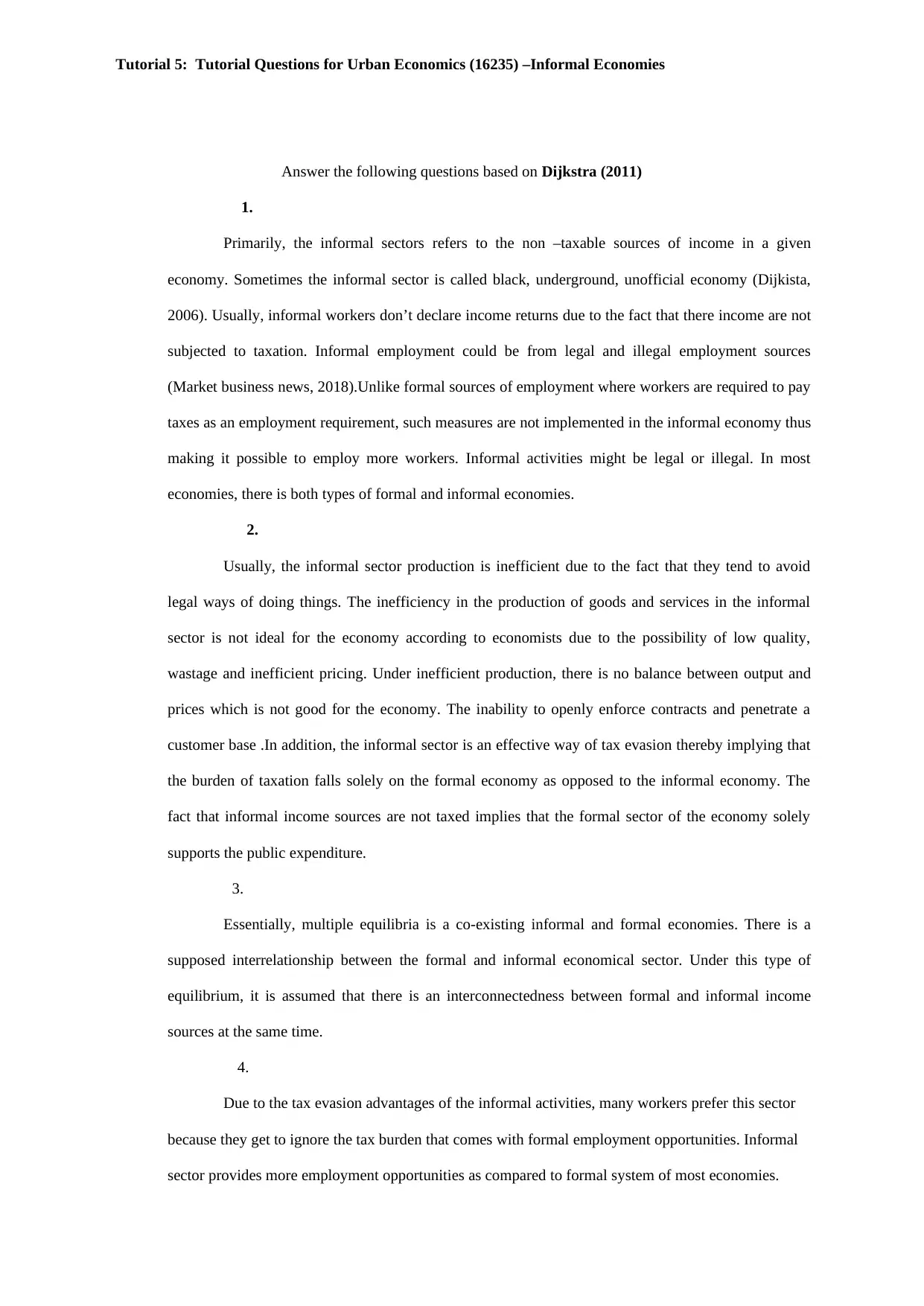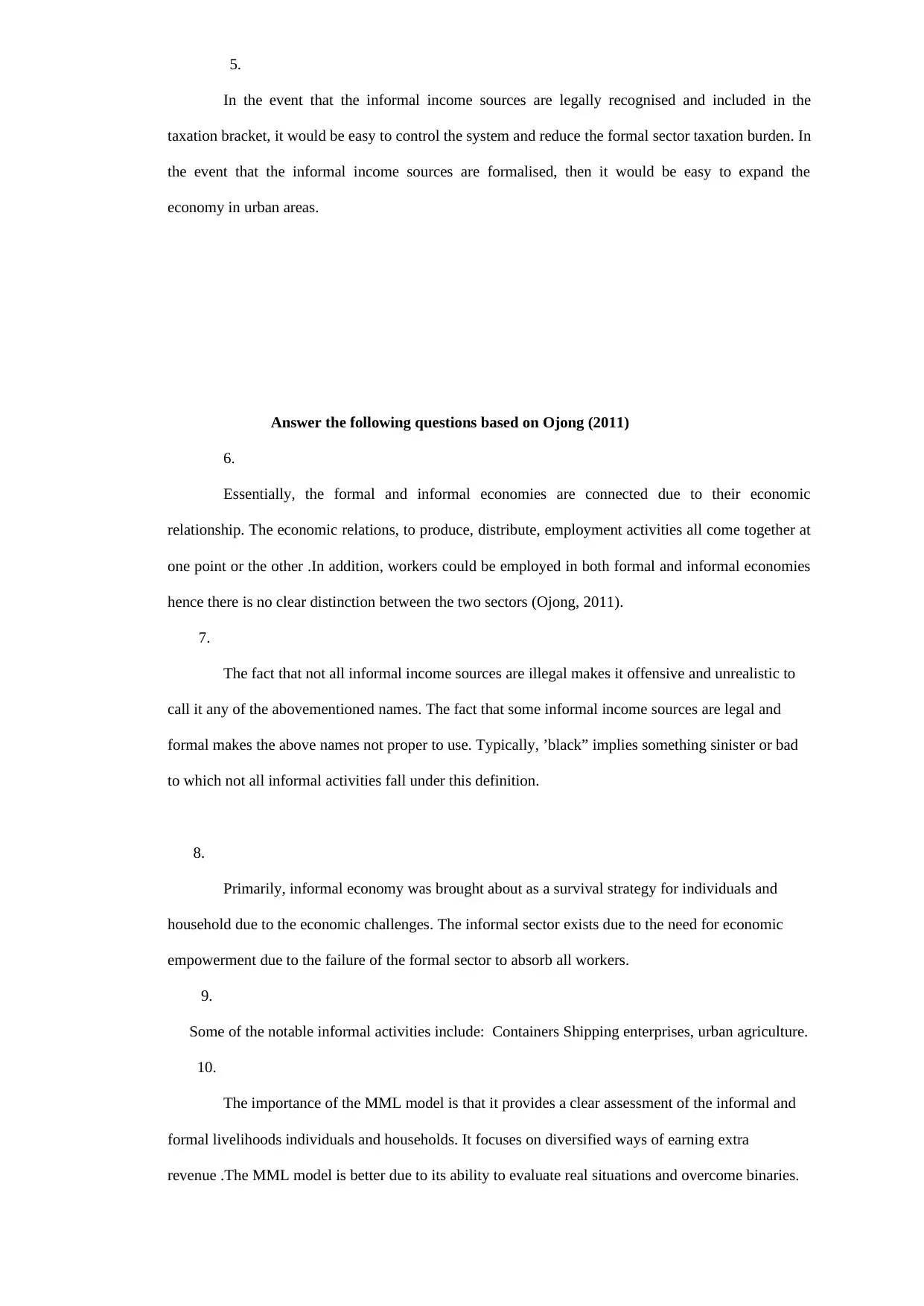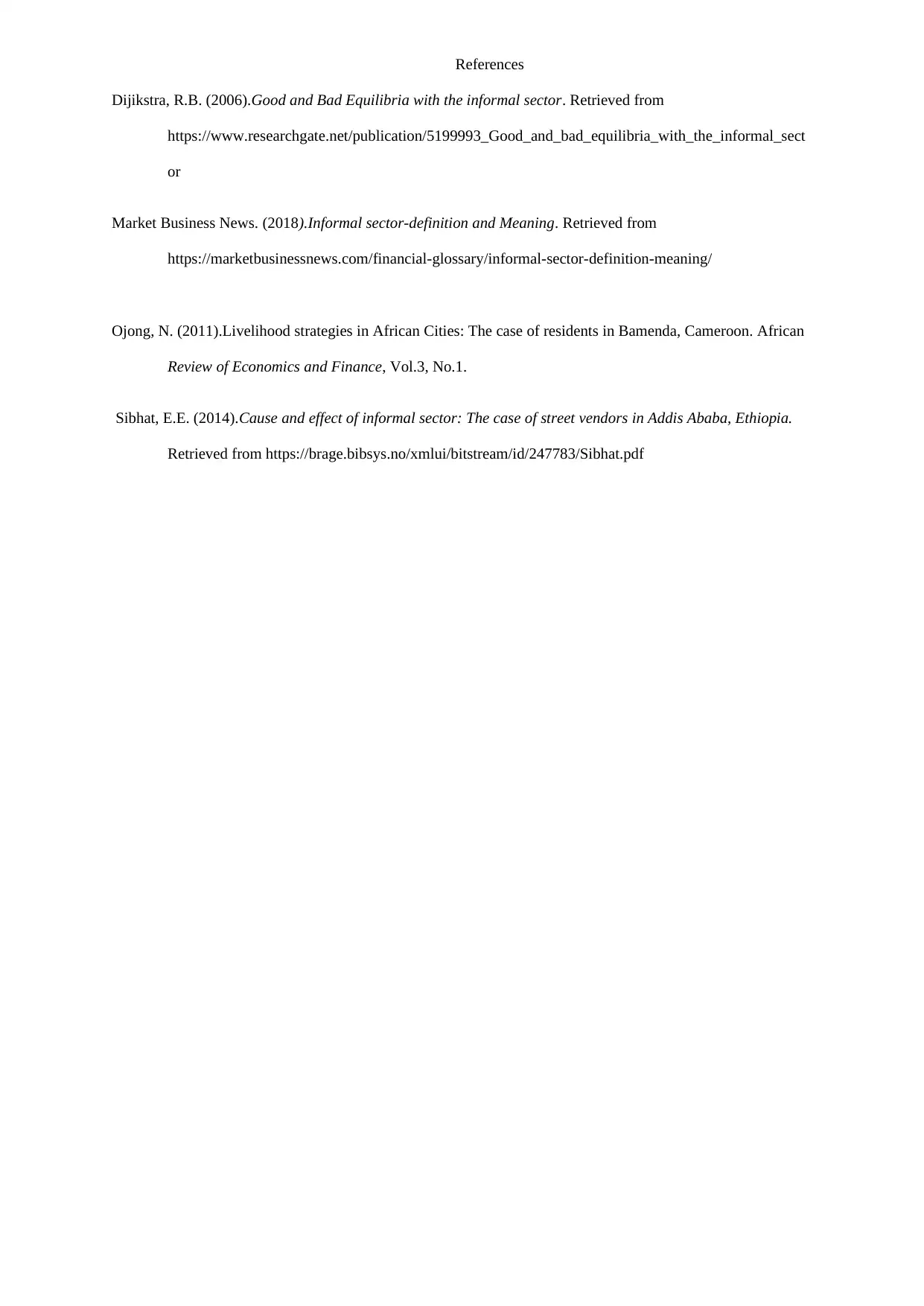Urban Economics (16235) Tutorial 5: Informal Economies Assignment
VerifiedAdded on 2021/05/30
|3
|826
|53
Homework Assignment
AI Summary
This assignment provides answers to tutorial questions on urban economics, specifically focusing on informal economies. The solution addresses key concepts such as the definition of the informal sector, its relationship with the formal economy, and the implications of tax evasion. It explores the inefficiency of informal production, the concept of multiple equilibria, and the employment advantages of the informal sector. The document also examines the interconnectedness between formal and informal economies, the appropriateness of terminology used to describe the informal sector, and the role of informal activities as survival strategies. The assignment references Dijkstra (2011) and Ojong (2011), and discusses the MML model, providing a clear assessment of the informal and formal livelihoods individuals and households. The solution highlights the importance of recognizing and integrating informal income sources for better economic control and expansion, with a detailed overview of the arguments and supporting evidence from the provided references.
1 out of 3








![[object Object]](/_next/static/media/star-bottom.7253800d.svg)